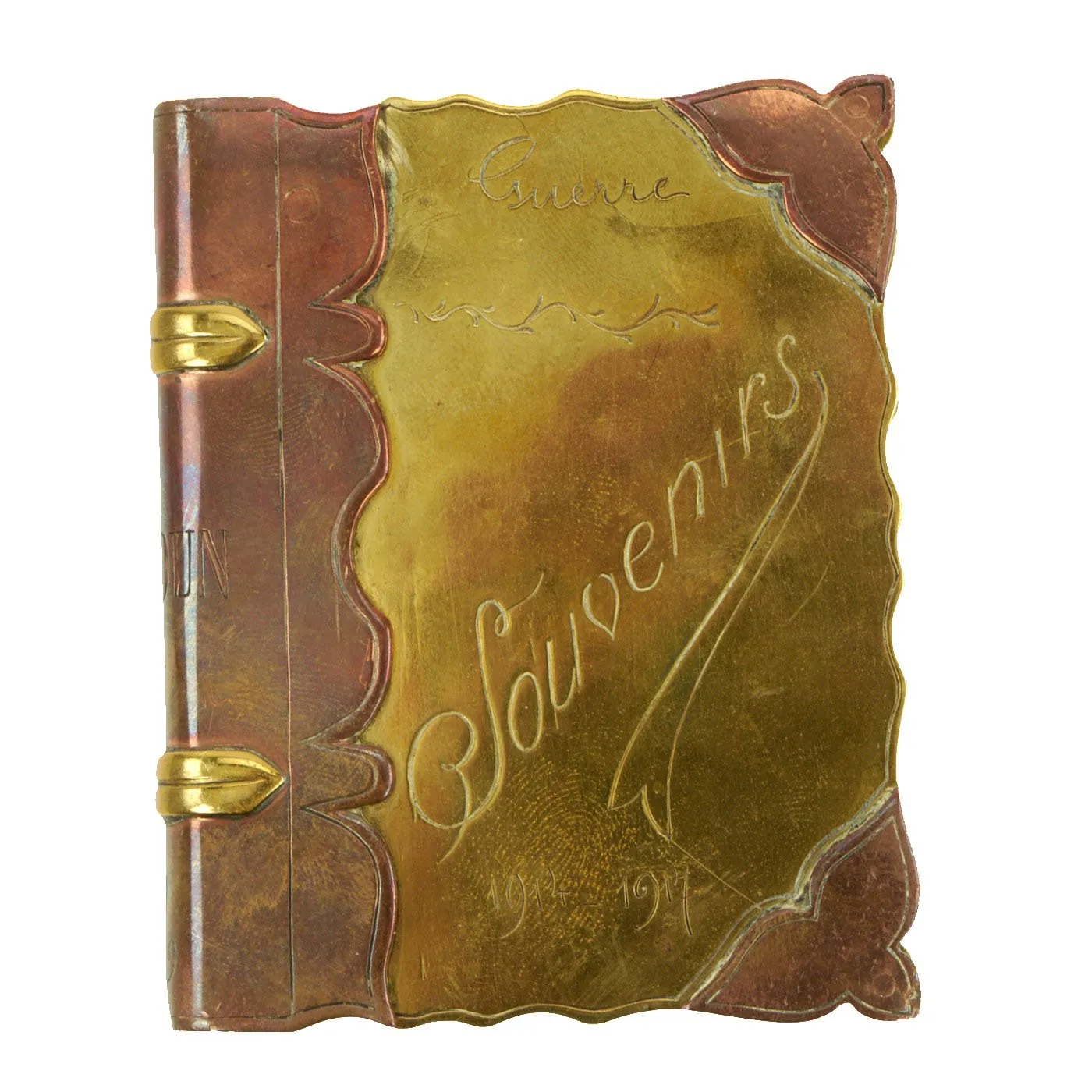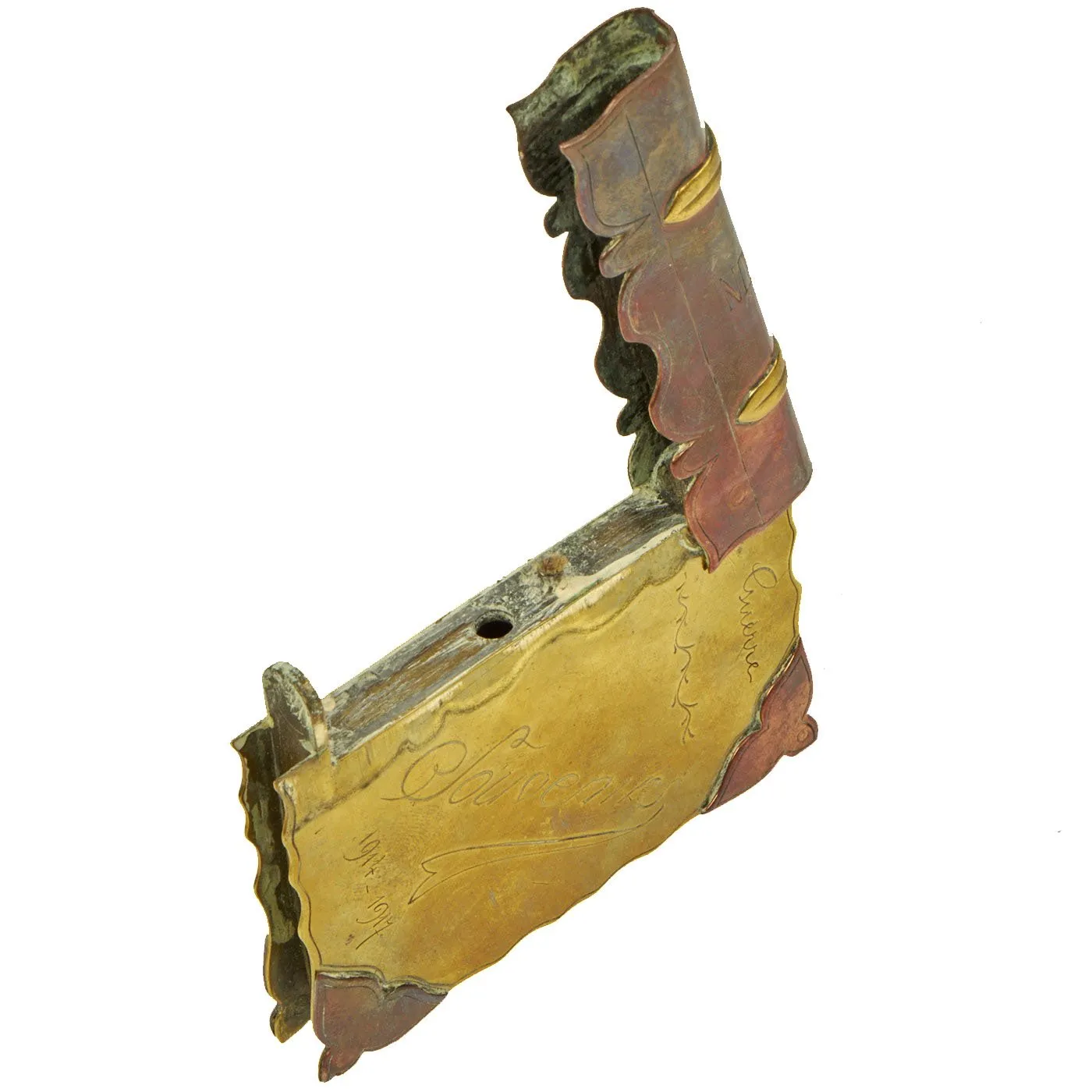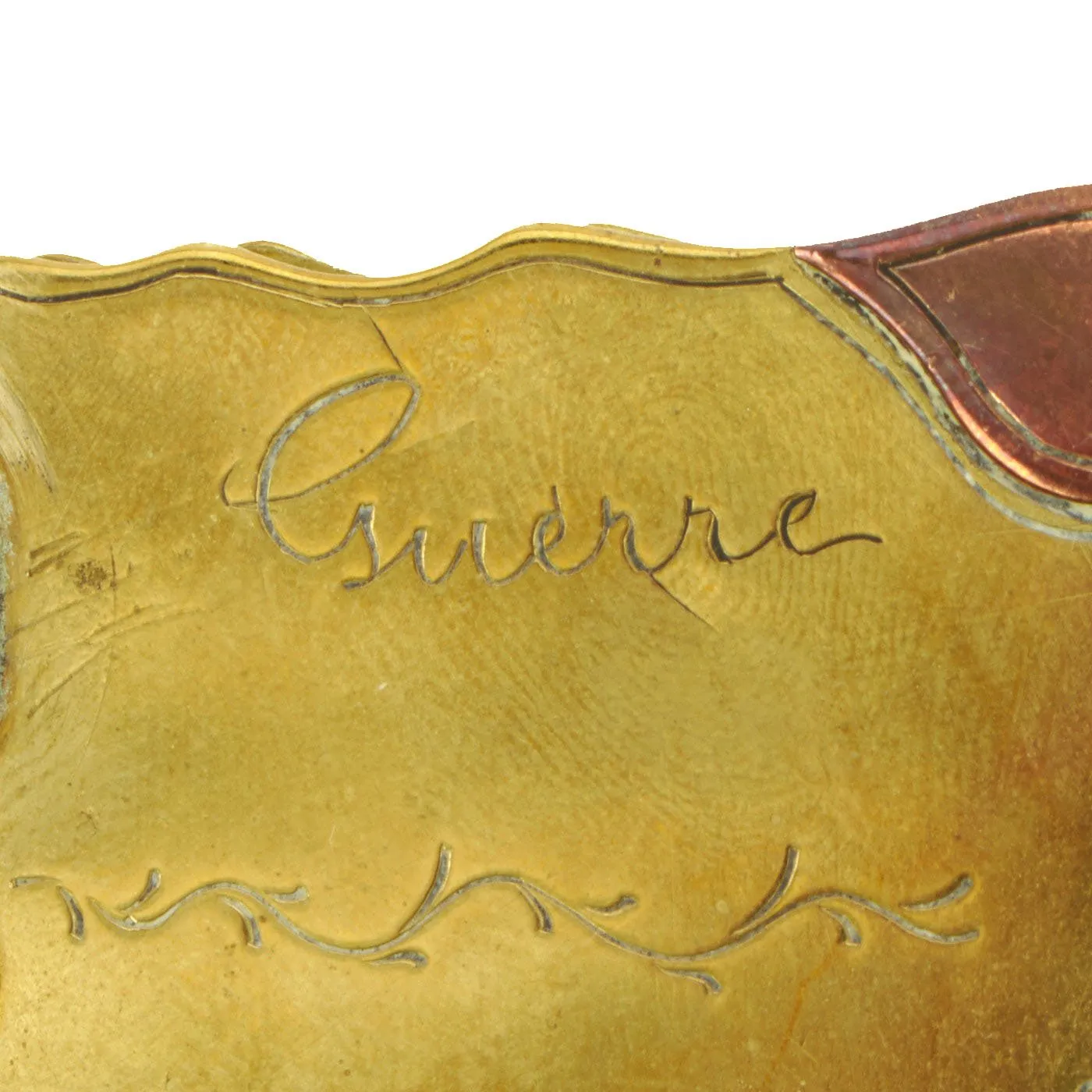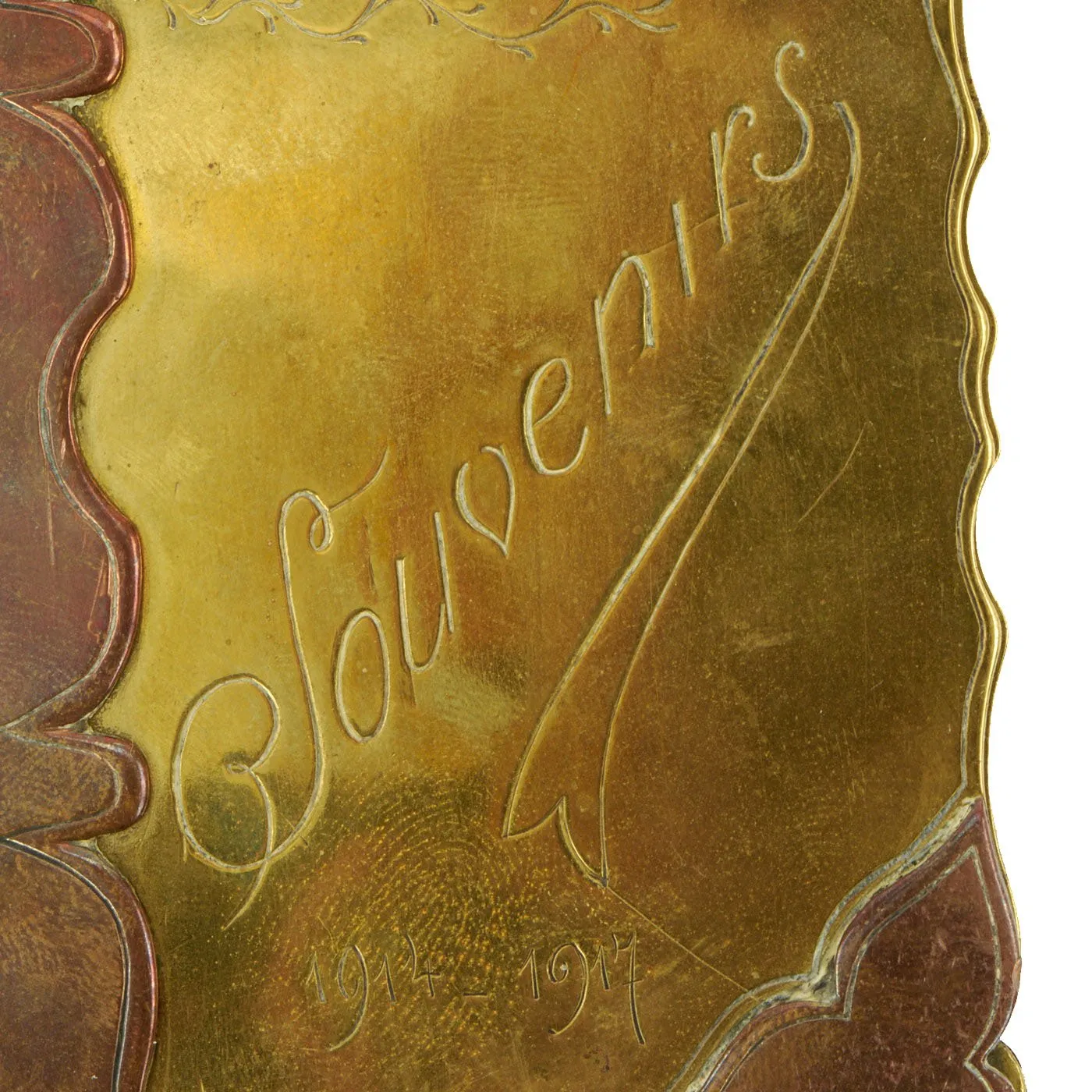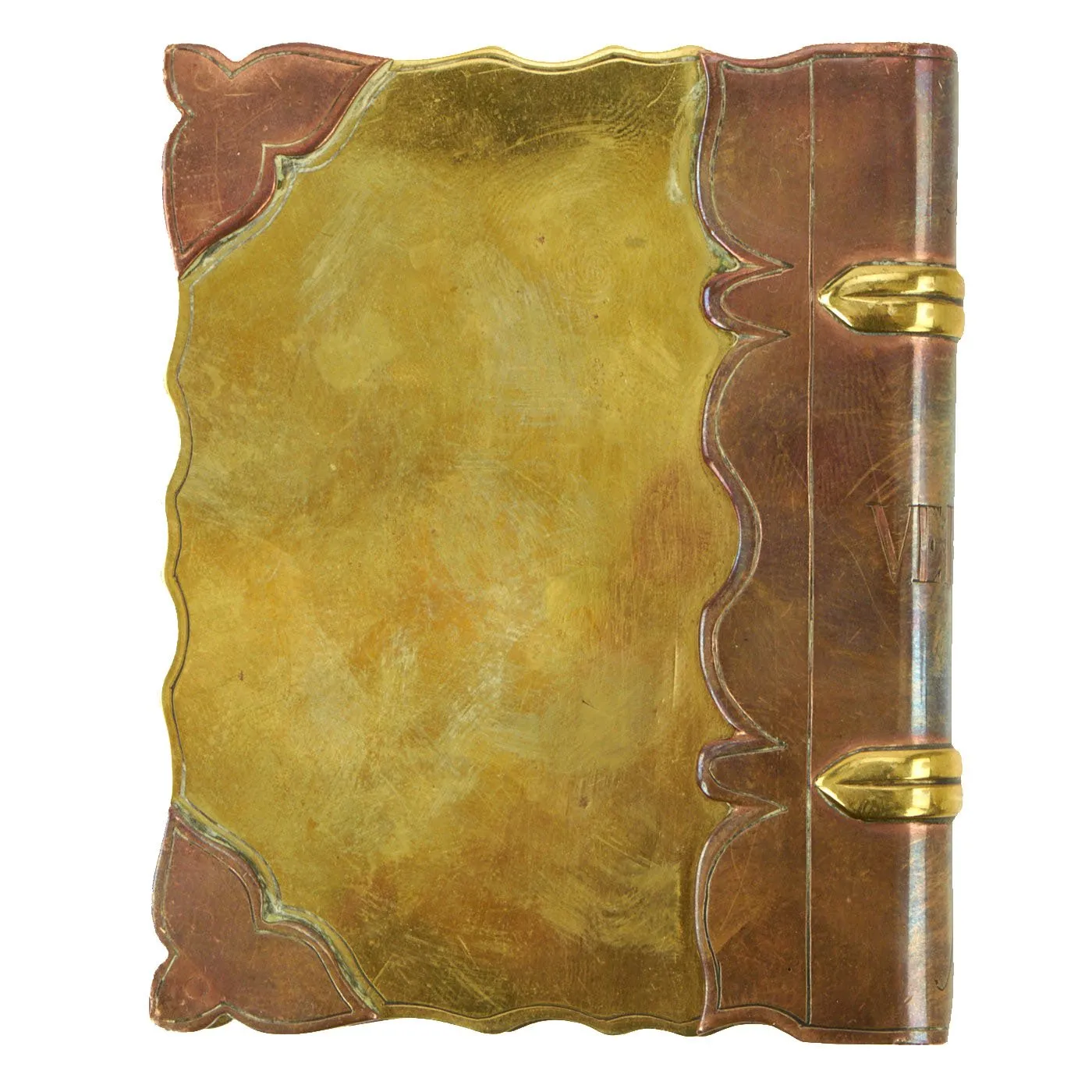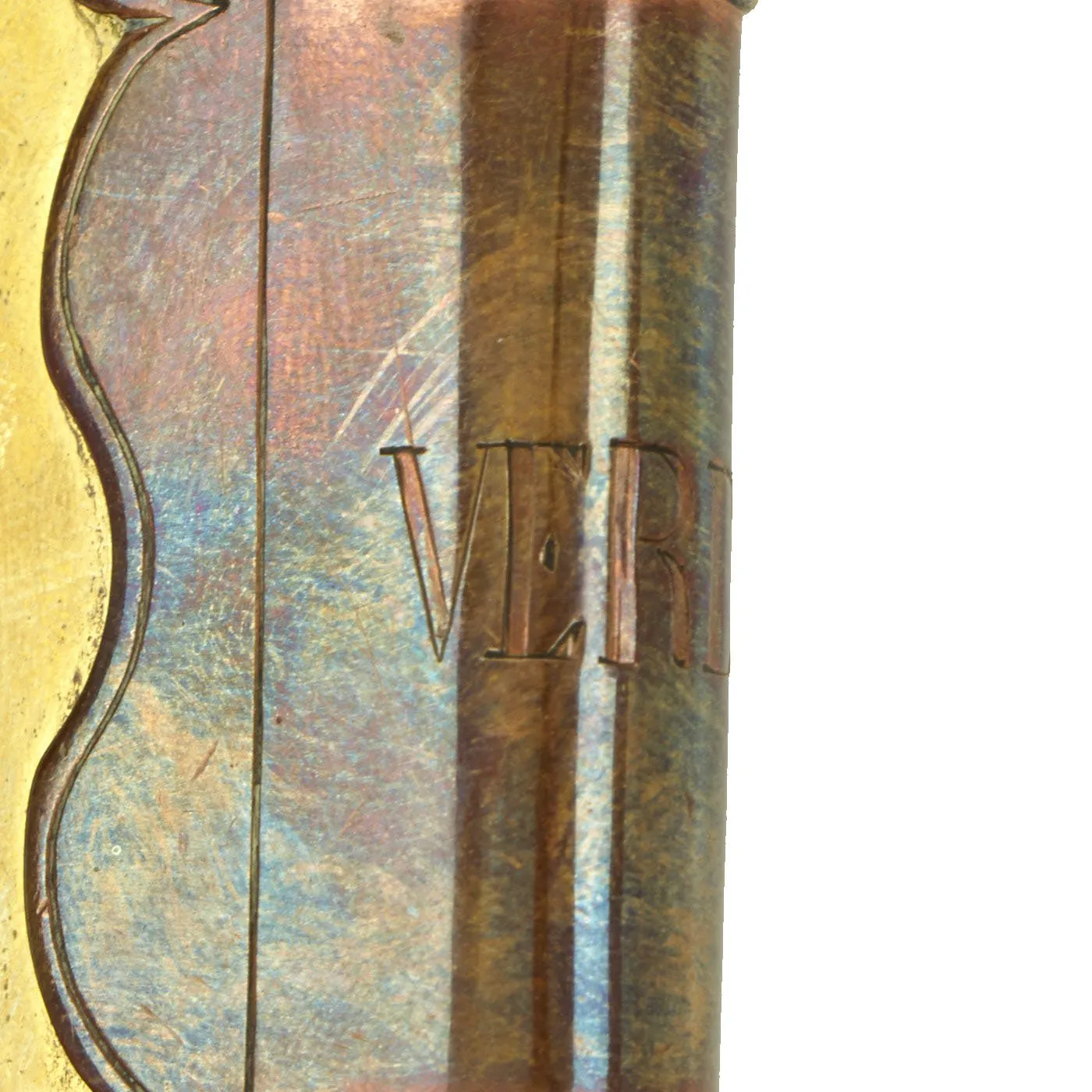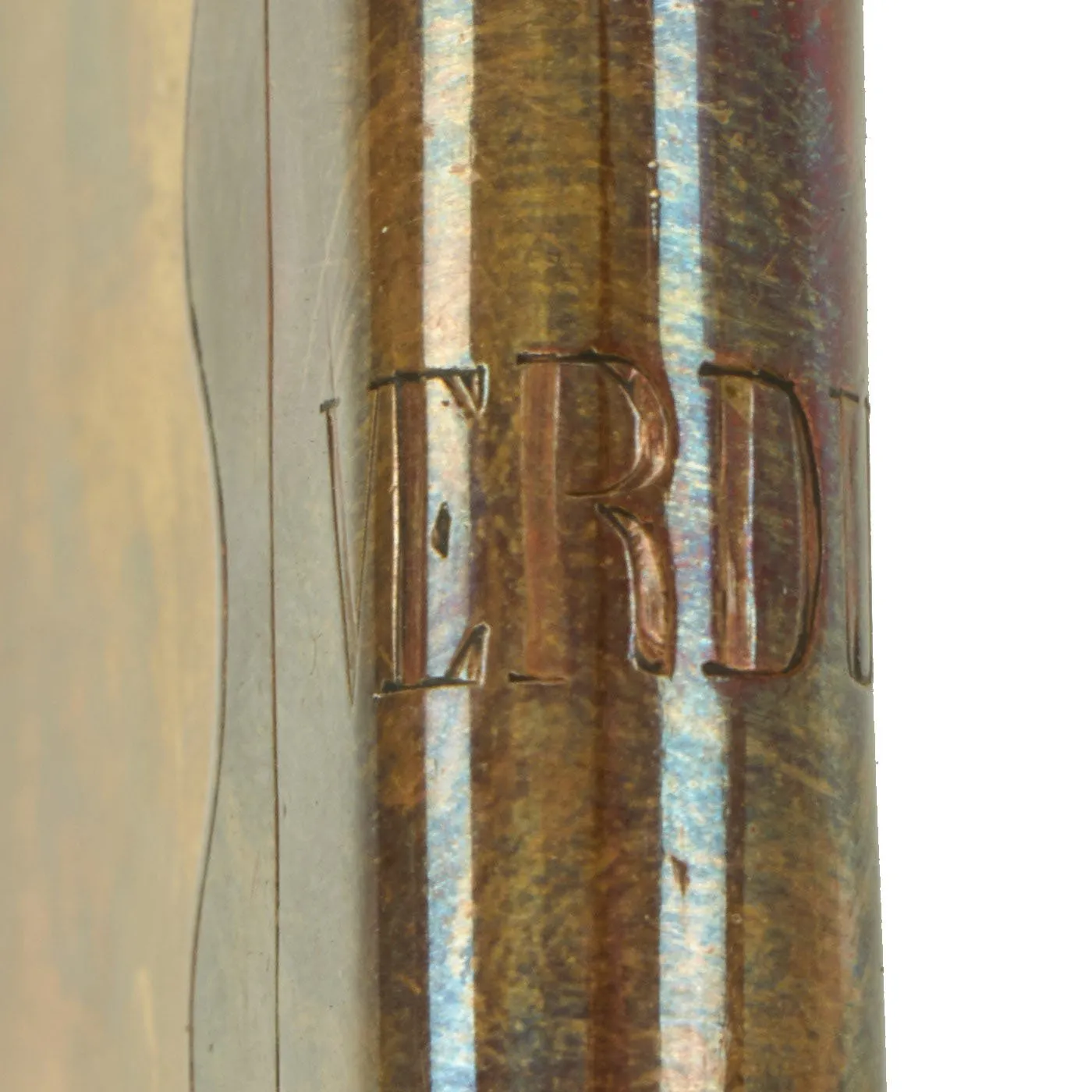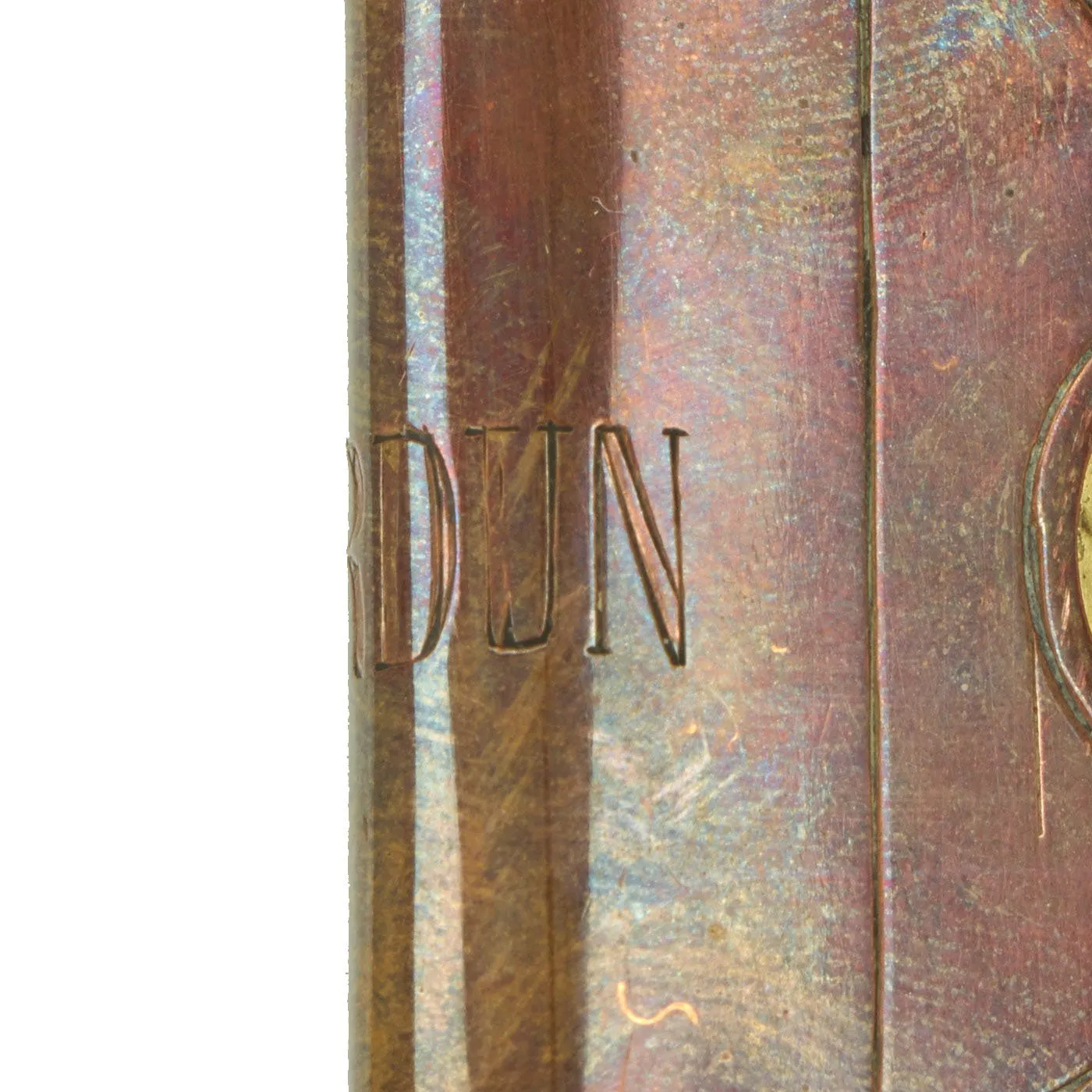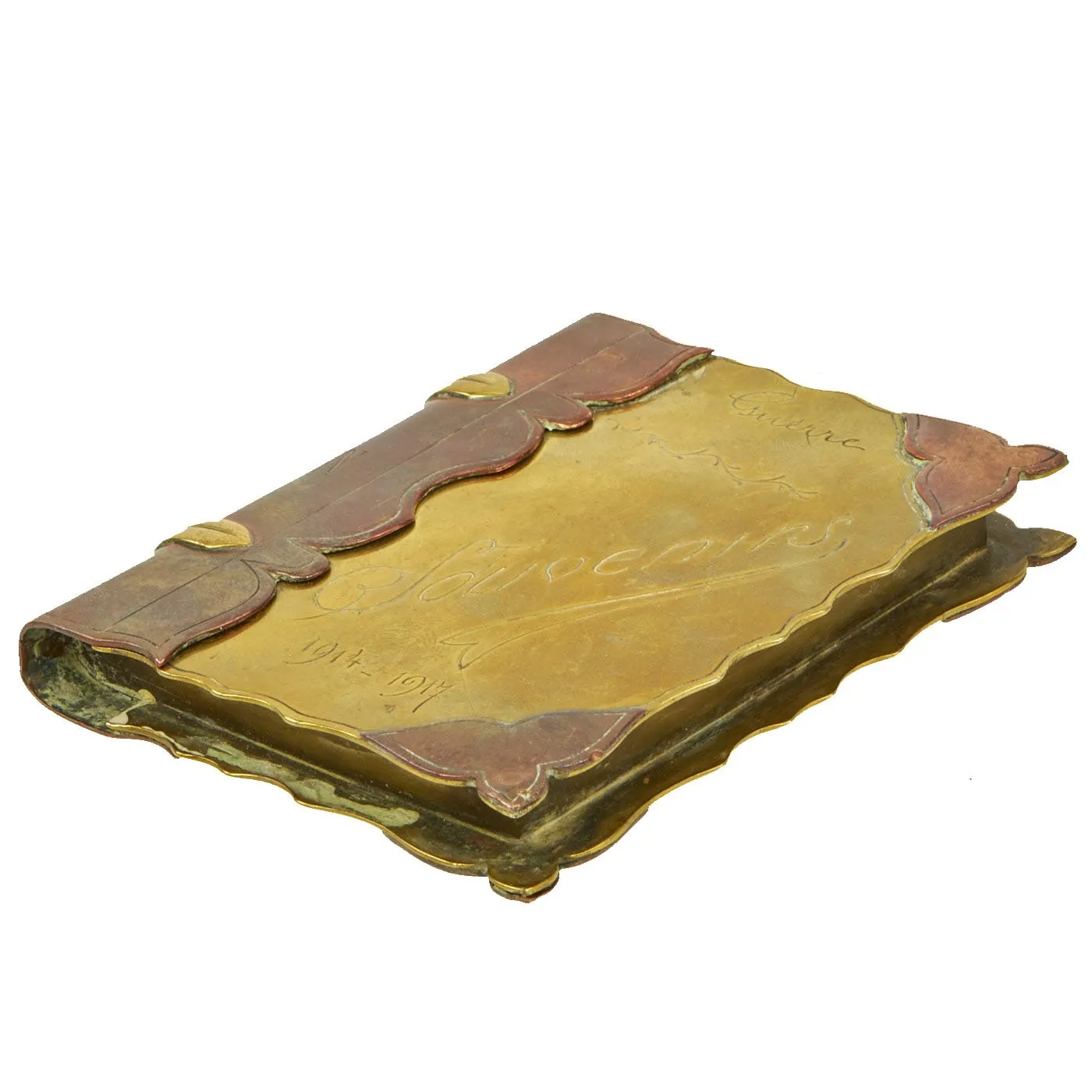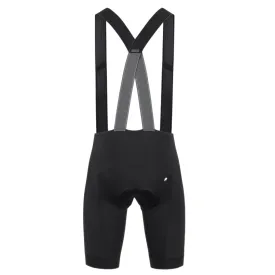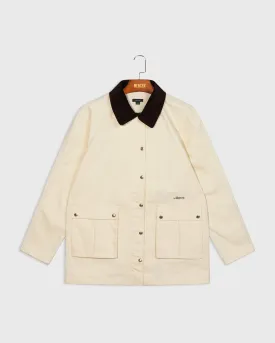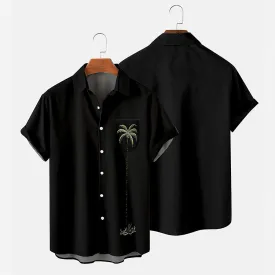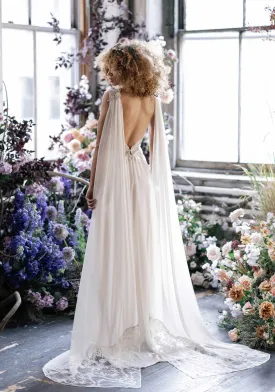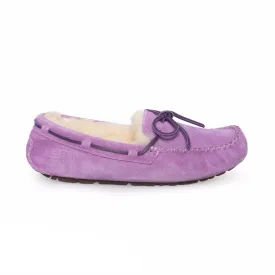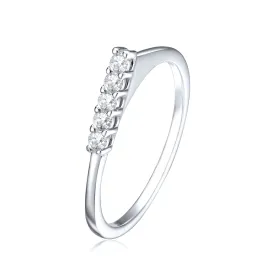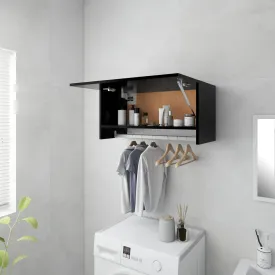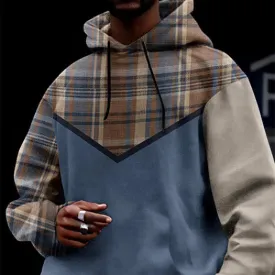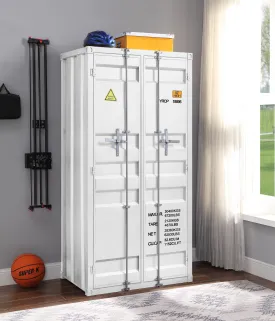Original Item: One of a Kind. Here is a great piece of French WWI "Trench Art", in the form of a very well executed "book" shaped lighter. It is made from copper and brass, items readily available on the front and in the trenches due to the large number of artillery shells used during "The Great War".
The front of the lighter is marked in French with the phrase "War Memories 1914-1917":
Guerre
Souvenirs
1914-1917
The copper "spine" of the book is marked VERDUN in block letters, with A at the top and M at the bottom, probably the owners initials. It measures approximately 2 7/8"W x 3 1/2H x 1/2" when closed, and just has a great patina. The lighter is currently empty and missing a flint mechanism, but that could be easily remedied if someone wanted to put it back into service.
Overall a really nice eye appealing piece of Great War Trench Art!
Trench art is any decorative item made by soldiers, prisoners of war, or civilians where the manufacture is directly linked to armed conflict or its consequences. It offers an insight not only to their feelings and emotions about the war, but also their surroundings and the materials they had available to them.
Not limited to the World Wars, the history of trench art spans conflicts from the Napoleonic Wars to the present day. Although the practice flourished during World War I, the term 'trench art' is also used to describe souvenirs manufactured by service personnel during World War II. Some items manufactured by soldiers, prisoners of war or civilians during earlier conflicts have been retrospectively described as trench art. There is much evidence to prove that some trench art was made in the trenches, by soldiers, during war.
In With a Machine Gun to Cambrai, George Coppard tells of pressing his uniform buttons into the clay floor of his trench, then pouring molten lead from shrapnel into the impressions to cast replicas of the regimental crest. Chalk carvings were also popular, with contemporary postcards showing carvings in the rocky outcrops of dug-outs. Many smaller items such as rings and knives were made by soldiers either in front line or support trenches, especially in quieter parts of the line.
Wounded soldiers were encouraged to work at crafts as part of their recuperation, with embroidery and simple forms of woodwork being common. Again from With a Machine Gun to Cambrai, George Coppard recalls that, while recuperating from wounds at a private house in Birkenhead, "one kind old lady brought a supply of coloured silks and canvas and instructed us in the art of embroidery. A sampler which I produced under her guidance so pleased her that she had it framed for me."
An example of therapeutic embroidery during World War I is the work of British military in Egypt, who were photographed sewing and embroidering for Syrian refugees. There was also the Bradford Khaki Handicrafts Club, which was funded in Bradford, UK, in 1918, to provide occupational therapy and employment for men returning from the trenches in France.




